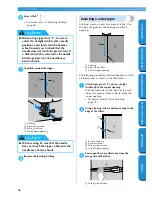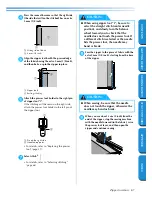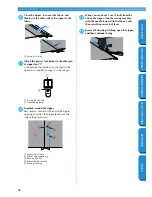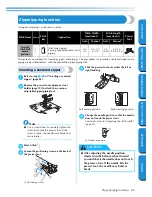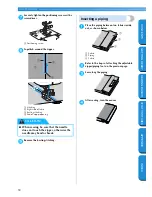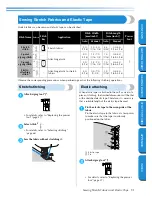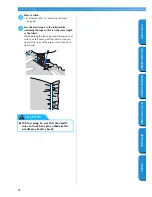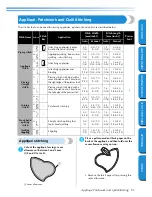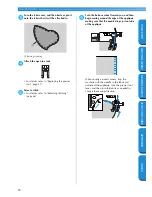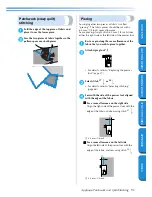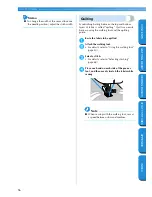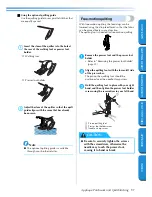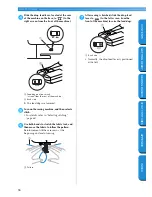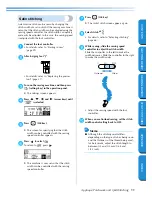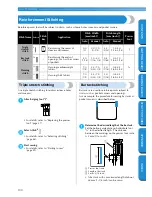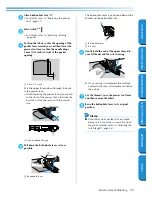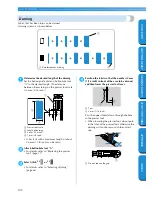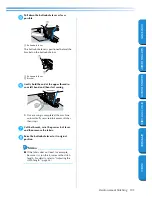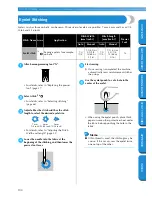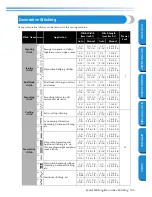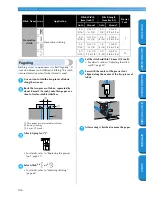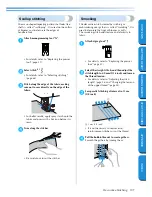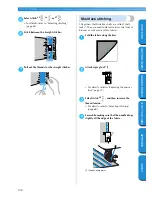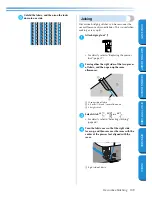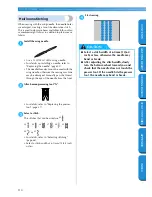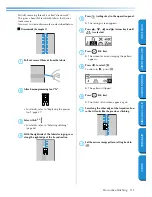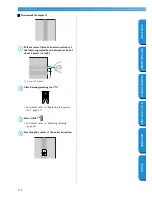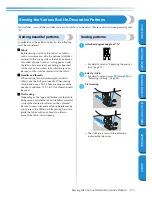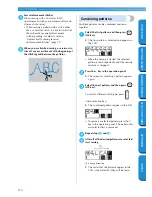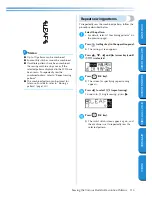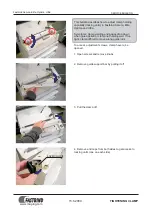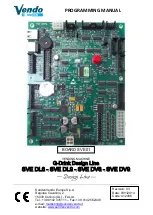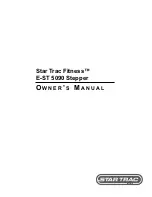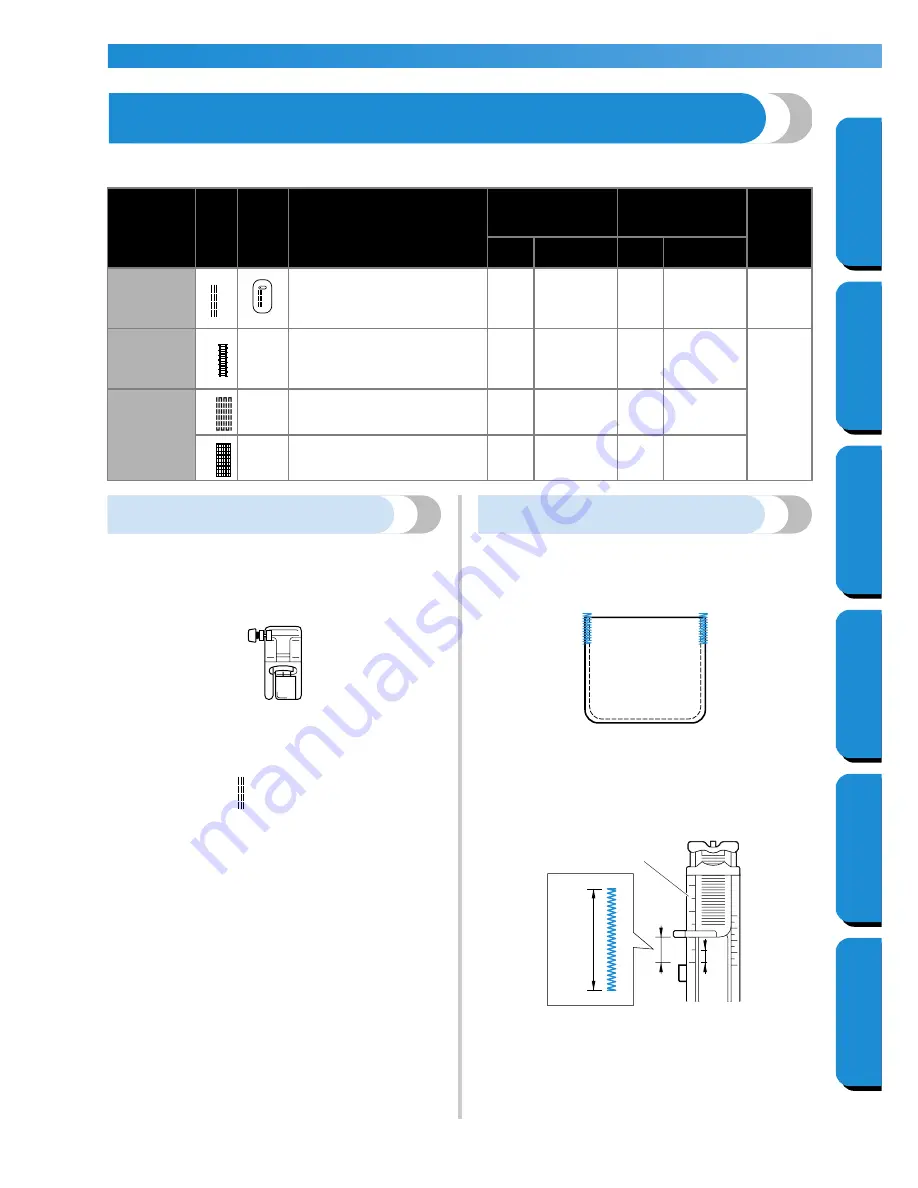
UTILITY STITCHES
——————————————————————————————————————————————————
100
GETTING READ
Y
CONTENTS
SEWING BASICS
U
T
IL
IT
Y
S
T
ITCHES
APPENDIX
INDEX
Reinforcement Stitching
Reinforce points that will be subject to strain, such as sleeve holes, inseams and pocket corners.
Triple stretch stitching
Use triple stretch stitching to reinforce sleeve holes
and inseams.
1
Attach zigzag foot “J”.
• For details, refer to “Replacing the presser
foot” (page 37).
2
Select stitch
4
.
• For details, refer to “Selecting stitching”
(page 68).
3
Start sewing.
• For details, refer to “Starting to sew”
(page 49).
Bar tack stitching
Bar tacks are used to reinforce points subject to
strain, such as pocket corners and openings.
As an example, the procedure for sewing bar tacks at
pocket corners is described below.
1
Determine the desired length of the bar tack.
Set the button guide plate on buttonhole foot
“A” to the desired length. (The distance
between the markings on the presser foot scale
is 5 mm (3/16 inch).)
1
Presser foot scale
2
Length of bar tack
3
5 mm (3/16 inch)
• A bar tack with a maximum length of about
28 mm (1–1/8 inch) can be sewn.
Stitch Name
Pattern
Stitch
Key
Application
Stitch Width
[mm (inch.)]
Stitch Length
[mm (inch.)]
Presser
Foot
Auto
Manual
Auto
Manual
Triple
stretch
stitch
4
Reinforcing the seams of
sleeves and inseams
0.0
(0)
0.0–7.0
(0–1/4)
2.5
(3/32)
1.5–4.0
(1/16–3/16)
J
Bar tack
stitch
54
–
Reinforcing the ends of
openings, such as the corners
of pockets
2.0
(1/16)
1.0–3.0
(1/16–1/8)
0.4
(1/64)
0.3–1.0
(1/64–1/16)
A
Darning
stitch
52
–
Darning mediumweight
fabrics
7.0
(1/4)
2.5–7.0
(3/32–1/4)
2.0
(1/16)
0.4–2.5
(1/64–3/32)
53
–
Darning thick fabrics
7.0
(1/4)
2.5–7.0
(3/32–1/4)
2.0
(1/16)
0.4–2.5
(1/64–3/32)
J
1
2
3

